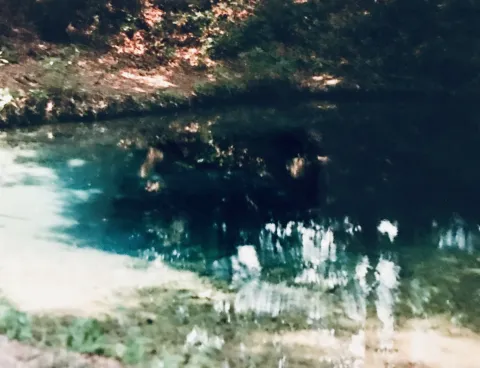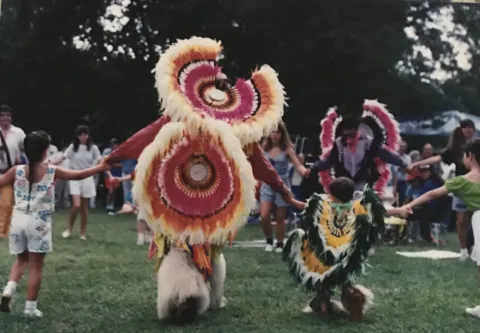Red Clay State Historic Park

Blue Hole Spring at Red Clay.
When our family first moved to Tennessee in 1982, we wanted to see and experience as much as we could in the area—the more inexpensive, the better. One place that caught our attention was Red Clay State Historic Park. Like all of Tennessee’s parks, this one has no admission.
In the summer of 1989, we heard of a celebration being held down there that would include a Powwow. I had seen Powwows out west and wanted the children to experience one, too. At that time we were living in Niota, north of Athens. Red Clay extends to the Georgia state line south of Cleveland so we expected this to be an all day trip.
The drive seemed forever and we heard plenty of “are we there yet” from the kids. It’s down Interstate 75 to Cleveland’s south exit, Hwy 64 or APD 40, heading east. Then we headed south on Blue Springs Road watching for signs. (These days online maps make it so much easier.) With that said, however, it was well worth the drive. Red Clay impressed us with its simplicity. And then there is the beautiful Blue Hole Spring, considered special to those who settled there long ago. That first time we first went to Red Clay you could go all the way down to the Blue Hole and walk on a rock path across the water. In recent years, in order to protect the integrity of the spring, a bridge and fences have been built. You can look, but you can’t touch. There are several relocated and rebuilt historic structures and lots of trails and picnic areas.
Red Clay is considered to be the beginning of the Trail of Tears because it was “the last seat of the Cherokee National Government before the 1838 enforcement of the Indian Removal Act of 1830” by the military (Wiki). The Cherokee Nation was forced to move west. Those who refused to leave fled to the Smoky Mountains. As they fought removal, there were 11 councils between 1832 and 1837 at Red Clay. There is a visitor’s center at Red Clay where the complete history is explained. The park was dedicated in 1979. Besides the Blue Hole Spring, there is the Eternal Flame, which was placed in the park in 1984, by the three bands of the Cherokee Nation. That was the first time the three groups had met together since the forced removal in 1838.
The celebration we went to was fun. Various tribes were represented and our children loved the blowgun demonstrations, crafts, and friendship dances. We all learned a great deal. Over the years, we have visited Red Clay frequently, especially after we moved to Cleveland. There have been many improvements and it is even more beautiful than it was 30 years ago.
Susan Kite is the author of five young adult novels, with two more in pre-publication. She was also chosen to write a novelette for a hundredth anniversary Zorro anthology coming out in May. She is also a member of Author’s Guild of Tennessee. Her website is www.bookscape.net
- Log in to post comments
